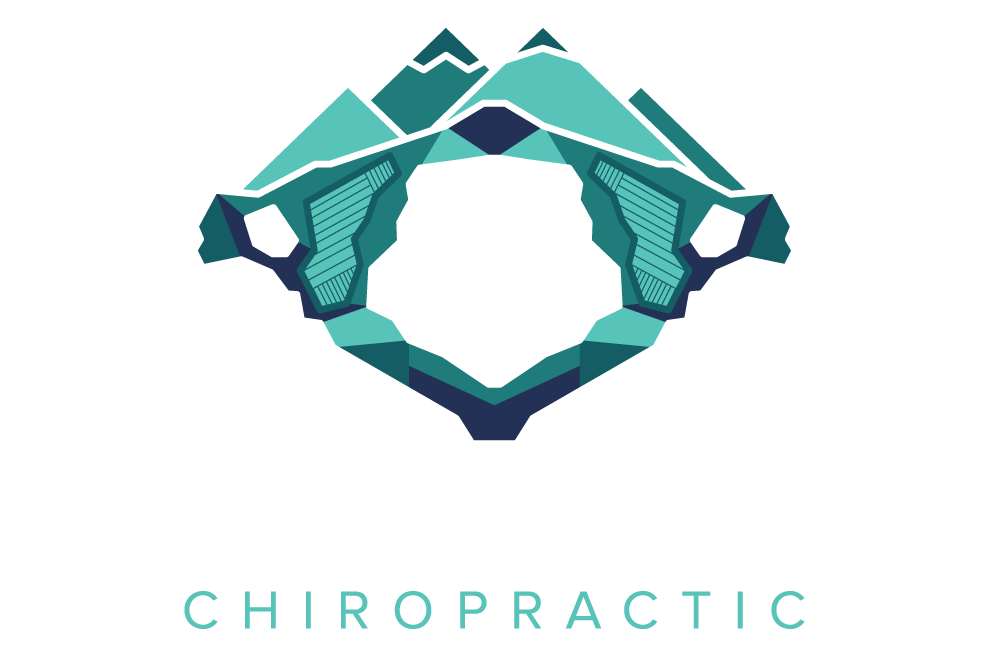Chiropractic adjustments are sessions of spinal manipulation administered by a doctor of chiropractic. Adjustments are used for chronic pain relief and treating other medical conditions by correcting spinal misalignments.
What is a chiropractor? A chiropractor is a highly qualified healthcare professional who has earned their Doctor of Chiropractic (D.C.) degree. Chiropractors adjust the patient’s spinal joints to address certain disorders.
There are several evidence-based health benefits of chiropractic care. A chiropractic doctor can treat conditions such as musculoskeletal pain, migraines, and sciatica with spinal adjustments.
Upper cervical chiropractic is a subspecialty of chiropractic care that focuses on the 2 upper vertebrae of the spine: the atlas (C1) and the axis (C2). Upper cervical care is employed to treat several disorders and injuries effectively.
Below, you’ll learn the answer to these questions:
What is a chiropractic adjustment?
A chiropractic adjustment (also known as a “spinal adjustment”) is a session of spinal corrections performed by a chiropractor. Chiropractic adjustments may include several individual chiropractic techniques, such as the toggle drop, lumbar roll, or table adjustments.
How often should you get chiropractic adjustments? For chronic pain that significantly affects your quality of life, you should get a chiropractic adjustment every week or even multiple times each week.
What is the difference between chiropractic adjustments and massage? A chiropractor corrects spinal misalignments, and a massage therapist manipulates your soft tissue and muscles.
You may visit a chiropractor once a month for simple maintenance and prevention, but this varies greatly depending on your provider.
Upper Cervical Chiropractic
Our upper cervical chiropractic treatment plans typically require weekly treatments for 12 weeks at a time. Maintenance adjustments are not required, but are recommended for optimal health.
There is no cookie-cutter formula to knowing what someone needs. Based on your condition, lifestyle, and state of your spine, I create a custom fit 3-month care plan to get started. It’s very rare I see anyone more than once a week. Most patients can expect to average about 1 visit per week for the first 3 months of care; “The Corrective Care Plan” phase.
Following those first three months, I do a comprehensive re-examination where I will:
Osteopath vs. Chiropractor
An osteopath is a slightly different profession from a chiropractor.
Osteopaths (doctors of osteopathy, or DOs) go through four years of medical school. Very few osteopaths prescribe to the importance of spinal correction for all-body health.
Chiropractors go to a chiropractic post-graduate school, not medical school. The chiropractic profession focuses closely on all-body health via spinal adjustments.
Osteopaths perform osteopathic adjustments, which are very similar to chiropractic manipulations. Osteopathic adjustments are watered-down chiropractic adjustments. Like physical therapists, osteopaths have minimal (elective) training in “manipulations.”
Ultimately, osteopathy does not use the principles of complementary or integrative health, in which a lifestyle approach promotes health. Chiropractic, on the other hand, honors the innate systems of the body to promote health with minimal to no use of drugs or conventional medicine principles.
Benefits of Chiropractic Adjustments
Chiropractic adjustments correct spinal misalignments and spinal motion issues. Left untreated, misalignments and subluxations may cause:
Health benefits of chiropractic adjustments include:
- Improved joint function (including range of motion)
- Reduced lower back pain
- Reduced neck pain
- Headache relief
- Migraine relief
- Better blood circulation
- Improvement of insomnia
- Easier breathing, including with certain asthma issues
- Relief from car accidents
These health benefits are backed by peer-reviewed science. A slew of other benefits have been reported by patients and chiropractors but may not be published in scientific journals.
If you are interested in a chiropractic adjustment, click here to make your appointment at Denver Upper Cervical Chiropractic. We work with our patients to figure out a treatment plan that works for you.
The 7 Chiropractic Adjustments
7 manual therapy adjustments will vary from doctor to doctor. Here’s a list of what they are and how they can bring relief:
What to Expect During Chiropractic Treatment
Before the Adjustment
Before your adjustment, your chiropractor should discuss your treatment level.
You should not expect any pain during a chiropractic visit.
The first time you visit a chiropractor, they will likely consult you regarding your overall condition, symptoms, and desired results. This consultation may include the following:
You may or may not get a chiropractic adjustment at this initial consultation. At Denver Upper Cervical Chiropractic, we thoroughly analyze X-rays before delivering the first adjustment on the second visit. If a patient travels in from out of state, we will make special accommodations for time.
After your first visit, the chiropractor can examine your X-rays and formulate a personalized treatment plan.
Getting a Chiropractic Adjustment
When you return, it’s probably time for your first adjustment.
Your chiropractor will explore your maximum range of motion before the adjustment, stopping immediately if this movement triggers pain. The chiropractor may put their hands down on the targeted area to adjust.
I do not employ adjustments like this with my patients. It’s a common practice, but I use a gentle and precise instrument instead.
The Laney Torque Specific Cervical Adjusting Instrument is my device of choice (not to be confused with the Torque Release Technique’s “integrator”). They only made 65, and I have the only one in Colorado. The only possible negative side effect of this technique is soreness.
We use regular X-rays and cutting-edge technology to ensure the most precise, gentle, and effective adjustments. For patients with certain kinds of back pain (especially disc-related issues), we also recommend a session on our spinal decompression table to increase how effective their adjustment is.
What happens when you get adjusted by a chiropractor? The chiropractor corrects spinal misalignments and restores nervous system function. You may hear “popping,” which is normal. It is also normal to lie on a drop table or a chiropractic table.
Results You Should Expect
How long can chiropractic adjustments last? The amount of time a chiropractic adjustment lasts depends heavily on the state of the patient’s spine.
Over time, chiropractors should see people less often as they hold their adjustments longer and longer. What people do outside the office can greatly impact the efficacy of their care.
Chiropractic adjustments are for rehabilitation, maintenance, and prevention.
How long until I see results from chiropractic care? On average, a patient of chiropractic care sees results within 1 to 4 weeks of spinal adjustment. You may notice small physical changes right away, like increased lung capacity or limb strength.
Upper Cervical Chiropractic vs. General Chiropractic
What is the difference between upper cervical and general chiropractic?
Wear loose-fitting clothing so your clothes don’t get in the way of spinal adjustments. The chiropractor may lift up your leg or gently twist your back. Athletic wear is recommended.
It’s also important to wear close-toed shoes for general chiropractic adjustments.
You may hear a lot of “popping” or “cracking,” like when you crack your knuckles. This is caused by joint cavitation when gases in your joints’ lubricating fluids are released. It signals that your joints are being mobilized.
I do not adjust patients using a drop table or twisting/cracking adjustments. These are common but do not serve our patients best in their upper cervical chiropractic treatment plans.
Is it safe to get chiropractic adjustments?
Yes, it is safe to get chiropractic adjustments from a trained and licensed doctor of chiropractic.
Fewer than one in a million chiropractic patients experiences an adverse event during treatment.
Adjustment techniques have much better odds than taking anti-inflammatory meds, such as NSAIDs, for pain. NSAIDs (non-steroidal anti-inflammatory drugs) are less effective as spinal adjustments at relieving neck pain. NSAIDs don’t correct the cause of your problem.
Side effects of chiropractic adjustments are rare. Potential dangers include:
Who shouldn’t get a chiropractic adjustment? If a patient presents any of the following disorders, chiropractors may hesitate to perform spinal adjustments:
Cost & Insurance Coverage
The average cost of a chiropractic adjustment is $65-$85, but the price of chiropractic services can range from $30-$200 per visit. The cost varies depending on where you live, whether you’re seeing a specialist, and the years of experience of your chiropractor.
Many chiropractors require a one-time fee for the initial consultation, where a physical examination, x-rays, and personal health history are usually administered. From this initial consultation, a chiropractor can lay out an effective treatment plan for each individual patient.
Most chiropractic care is not covered by insurance. Our practice does not accept insurance, including Medicare/Medicaid for this reason.
Some insurance plans cover short-term chiropractic care for rehabilitation after an injury, such as a car accident or sports injury. Most insurance plans do not cover chiropractic care for maintenance, prevention, and general wellness.
If you’re considering chiropractic care but are still determining if you can afford it, talk to your chiropractor’s office about options such as payment plans or CareCredit.
Looking to the Future
Chiropractors are highly qualified medical professionals with a Doctor of Chiropractic education. They are trained and educated to administer chiropractic adjustments to all people — from children to older adults.
At Denver Upper Cervical Chiropractic, we have administered countless chiropractic adjustments. Gentle adjustments of the upper spine are critical to recovering from cervical instability. Click here to learn more about our practice.


